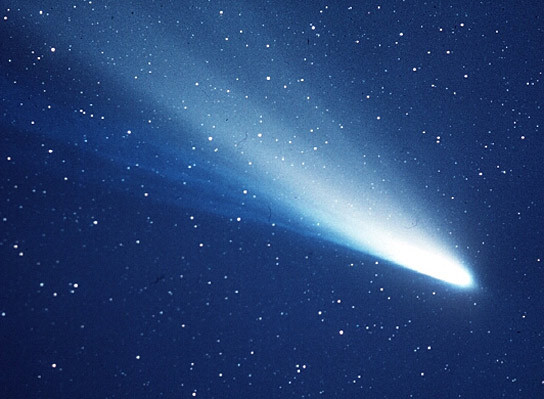On March 4th, 1986, the Soviet probe Vega 1 returned the first images of Halley’s Comet to earth. Halley’s Comet is the best-known short-period comet and is visible from earth every 75-76 years. In addition to that, it is the only short-period comet that is visible to the naked eye from earth. In 1986 the Vega 1 probe was directed into Venus’ gravity in an attempt to intercept the famous comet. The goal of the mission was to complete a fly-pass of the comet and capture multiple images with the hope of finding the comet’s nucleus. The nucleus of a comet is the solid, central part that is composed primarily of dust, rock and frozen gasses. When the nucleus is heated by the sun, the gasses produce the classic tail that can be seen trailing behind.
The early images that were sent back to earth showed two bright areas on the comet, which were initially thought to be a double nucleus. Later it was determined that those two bright spots were jets emitting from the inside of the comet. The nucleus was later confirmed in the pictures and was seen to be quite dark and much warmer than scientists would have thought. The pictures from the Vega 1 showed the nucleus to be 14 km long and scientists were able to determine that the nucleus is covered with a black crust of dust and rock that forms a protective shield around the icy core. The images of Halley’s Comet have helped to answer many questions regarding how comets work and why they exist. Hooray for science!
Halley’s Comet will be visible again on July 28, 2061 – get your binoculars out!
—
Krista Wiebe is a freelance writer and editor based in Calgary. Follow her on Twitter @KristaWiebe
Follow us on Twitter @SpectatorTrib
